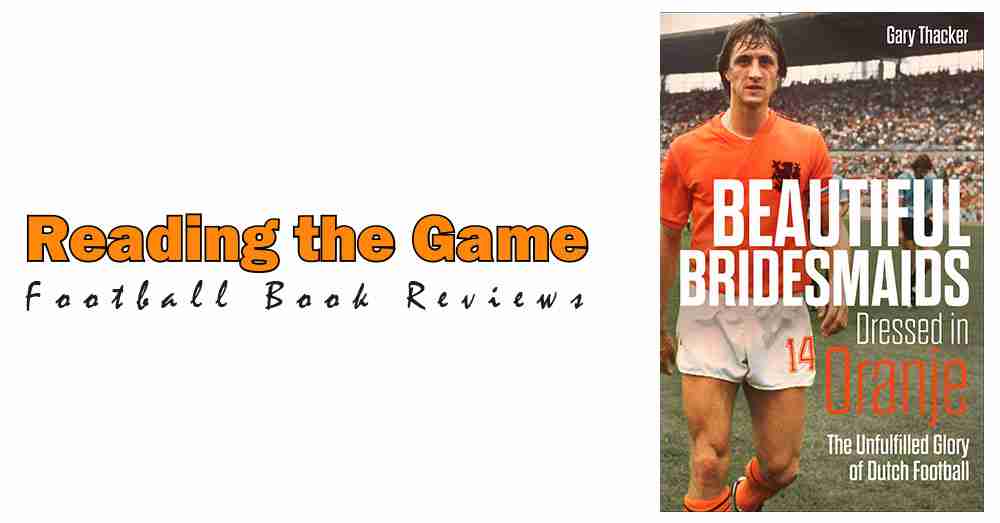Over the recent international break, I’ve been reading Beautiful Bridesmaids Dressed in Oranje by Gary Thacker. As I’ve just finished it, it seems sensible to add it to the Reading the Game library while it’s topical!
Beautiful Bridesmaids Dressed in Oranje is focussed on the Netherlands national team’s greatest era; the period between 1974-78 when the Oranje lost consecutive World Cup Finals. The Dutch (and especially Johan Cruyff) had captivated the author and lit a flame within him which burned for decades.
Although I’ve just read it, I’ve had my copy since last summer; I bought it when Stanchion ran a special offer on signed copies. It’s taken me a while to settle down with Beautiful Bridesmaids Dressed in Oranje, partly because I’ve had loads of books in my ‘to be read’ pile. Another factor is that, sometimes, you reach for a title you think will be an ‘easier’ read. Beautiful Bridesmaids Dressed in Oranje is a big book – more than 400 pages – and there have been times when I’ve selected something else because I wasn’t sure I had the time to do this book justice.
I needn’t have worried. As chunky as the hardback is, it is extremely readable, meaning that I finished it far more quickly than I’d expected to. I suppose I should thank my old friend, The Wandering Tractor, who read and reviewed the book before me!
I found myself transported back in time; so detailed were Thacker’s descriptions of the key matches that I feel like I now have a clear grasp on what happened in games played years before I was born. But Beautiful Bridesmaids Dressed in Oranje is much more than an account of three tournaments (the Dutch also played in the 1976 European Championship). This book is a meticulously researched history of the Dutch men’s national team, drawing on numerous interviews and primary sources and with every single quotation referenced in footnotes. There are 436 in total, each cited individually.
The book itself is broken down into seven parts; there’s a look at the Netherlands’ pretty inglorious record in international football prior to the 1970s. There’s an examination of how the rise of Ajax and Feyenoord to the top of European football in the early 1970s influenced the national team. Then, each of the three tournaments played by the Beautiful Bridesmaids is examined. Part 6 covers the period between 1979-2010, which includes the Netherlands’ only major trophy in men’s international football (the 1988 European Championship) and the historic third defeat in a World Cup Final, in 2010.
The final part is a look at what has happened since 2010 and an examination of whether such a relatively small nation can still claim the greatest prize in world football. The governing body of Dutch football, the KNVB, certainly hopes so and given that they have invested in facilities and harnessed the experience of former players, it is impossible to suggest that it could never happen. As Thacker wrote, “in football, hope springs eternal”.
Beautiful Bridesmaids Dressed in Oranje is the 27th book I’ve reviewed as part of Reading the Game; it is without question one of the finest. I don’t say that lightly; I only review books I’ve really enjoyed because, let’s face it, who am I to tell anyone that the work they’d spent years researching and writing is about 50 pages too long, or spoilt by the daft in-jokes which detract from the narrative? There’s more than enough of that on the internet already, so I write for pleasure and to hopefully inspire other football fans to pick up a book themselves. If you’ve ever been enthralled by a World Cup, you should pick up this book, so you can be enthralled by a couple more.
You don’t even have to take my word for it. Beautiful Bridesmaids Dressed in Oranje is published by Pitch Publishing, who are so confident you’ll love it, you can try before you buy. Scroll back towards the top of the page and you can still get a signed copy from Stanchion by clicking the link. Or why not pop into your local bookshop? If they haven’t got a copy in stock, I bet they’d order one for you.
